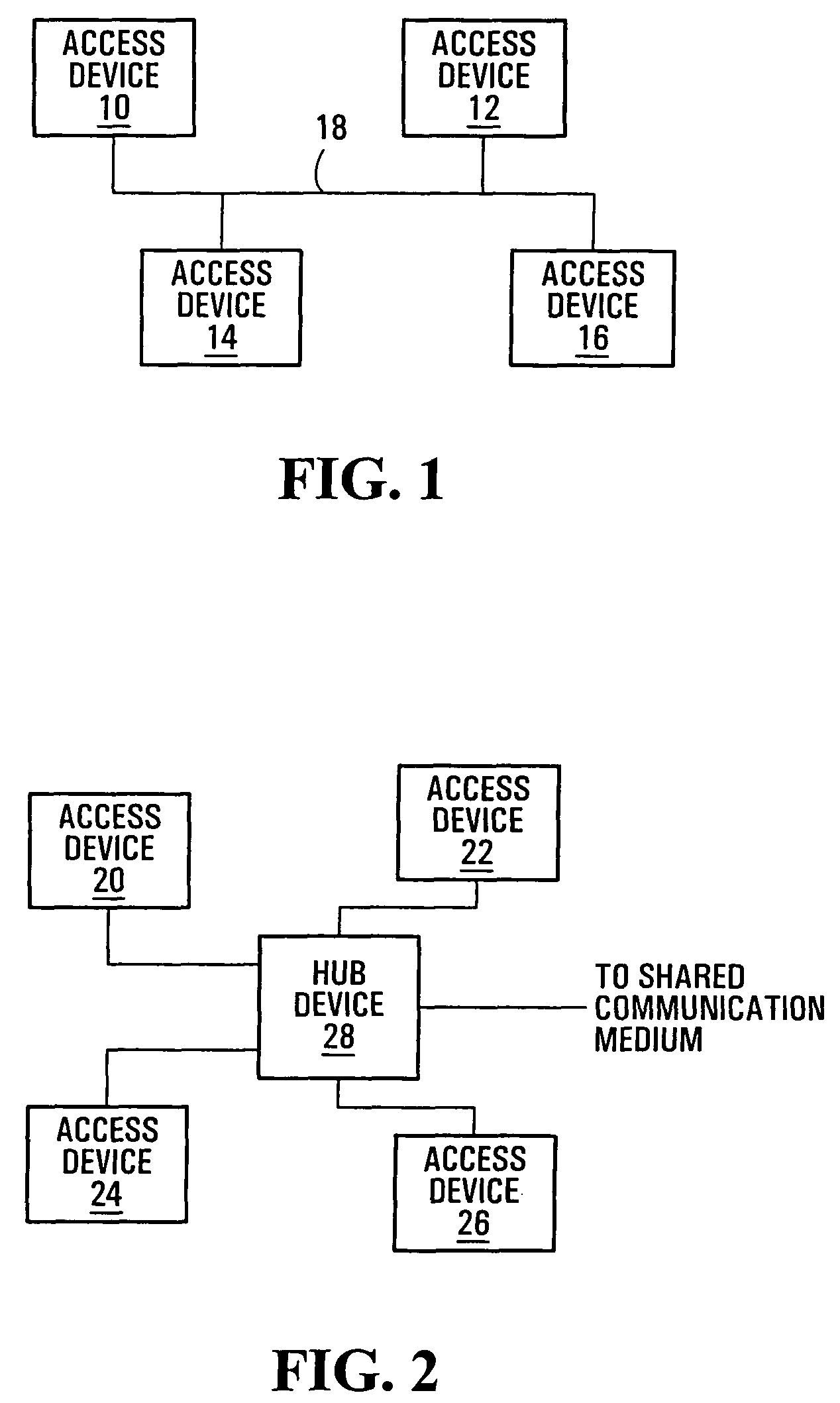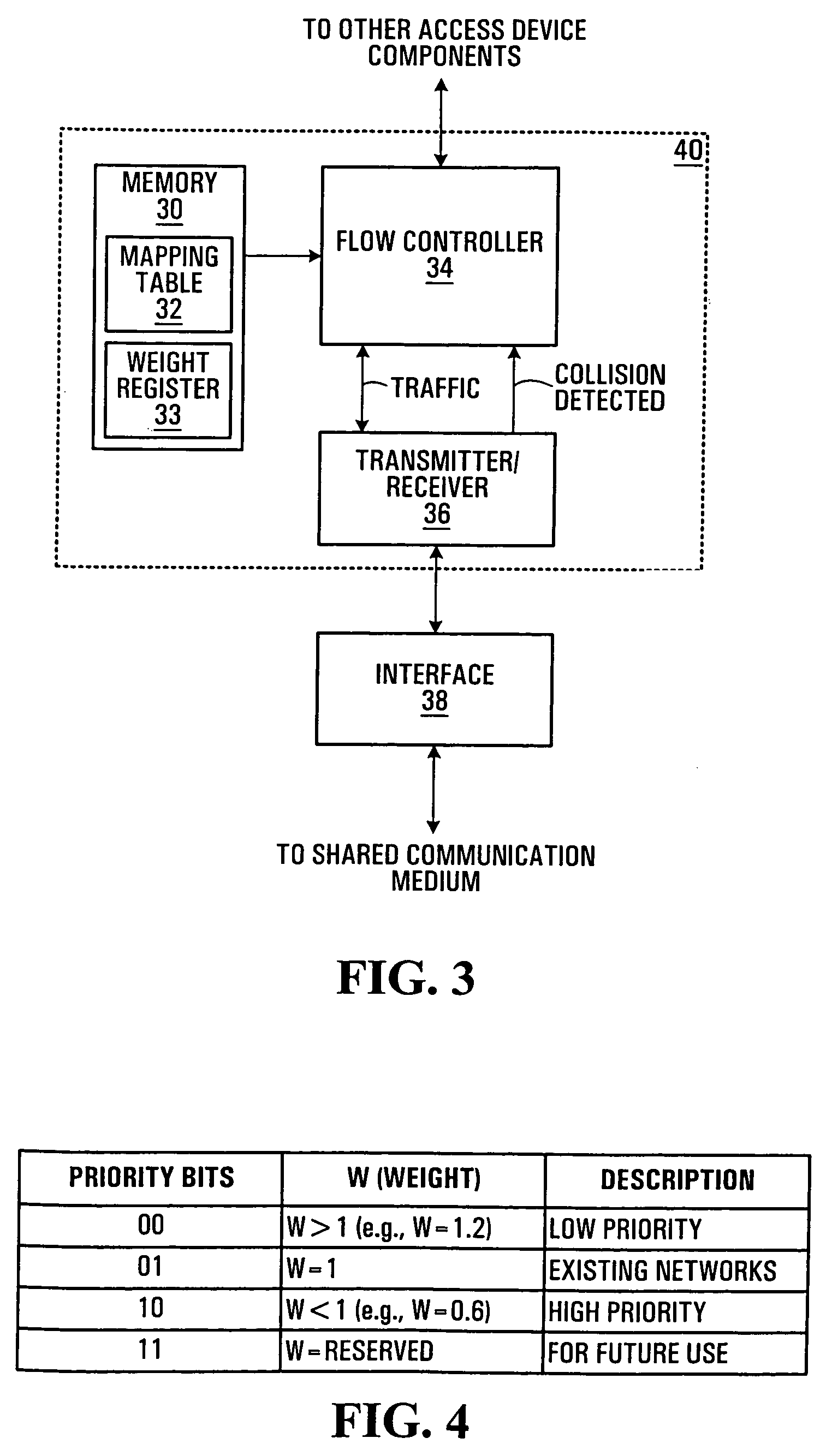Access systems and methods for a shared communication medium
a technology of access system and communication medium, applied in the field of communication, can solve the problems of difficult to achieve relative or quantitative quality-of-service (qos) guarantees among different devices or applications being executed on such devices, and achieve the problem of over- or under-prioritization
- Summary
- Abstract
- Description
- Claims
- Application Information
AI Technical Summary
Benefits of technology
Problems solved by technology
Method used
Image
Examples
case 1
[0105]The simulations covered various offered loads (0.8, 0.6, 0.4) and four cases of weight parameters. The offered loads of 0.8 and 0.6 denote relatively heavy network load, while a load of 0.4 represents a more lightly loaded network. The combinations of weights used for simulation are as follows:[0106] W_Hi=1.0, W_Lo=1.0[0107]Equal weight to both priorities, no back-off modification, representing existing network deployment.[0108]Case 2: W_Hi=1.0, W_Lo=1.5[0109]No back-off modification for high-priority, low priority uses modified back-off with a weight of 1.5.[0110]Case 3: W_Hi=1.0, W_Lo=2[0111]No back-off modification for high-priority, low priority uses modified back-off to less aggressively attempt medium access (weight is 2.0) than in Case 2.[0112]Case 4: W_Hi=0.5, W_Lo=1[0113]High-priority uses modified back-off, no change for low priority, representing existing deployment for low priority while high-priority uses a more aggressive back-off method.
[0114]FIGS. 6-11 are exam...
PUM
 Login to View More
Login to View More Abstract
Description
Claims
Application Information
 Login to View More
Login to View More - R&D
- Intellectual Property
- Life Sciences
- Materials
- Tech Scout
- Unparalleled Data Quality
- Higher Quality Content
- 60% Fewer Hallucinations
Browse by: Latest US Patents, China's latest patents, Technical Efficacy Thesaurus, Application Domain, Technology Topic, Popular Technical Reports.
© 2025 PatSnap. All rights reserved.Legal|Privacy policy|Modern Slavery Act Transparency Statement|Sitemap|About US| Contact US: help@patsnap.com



